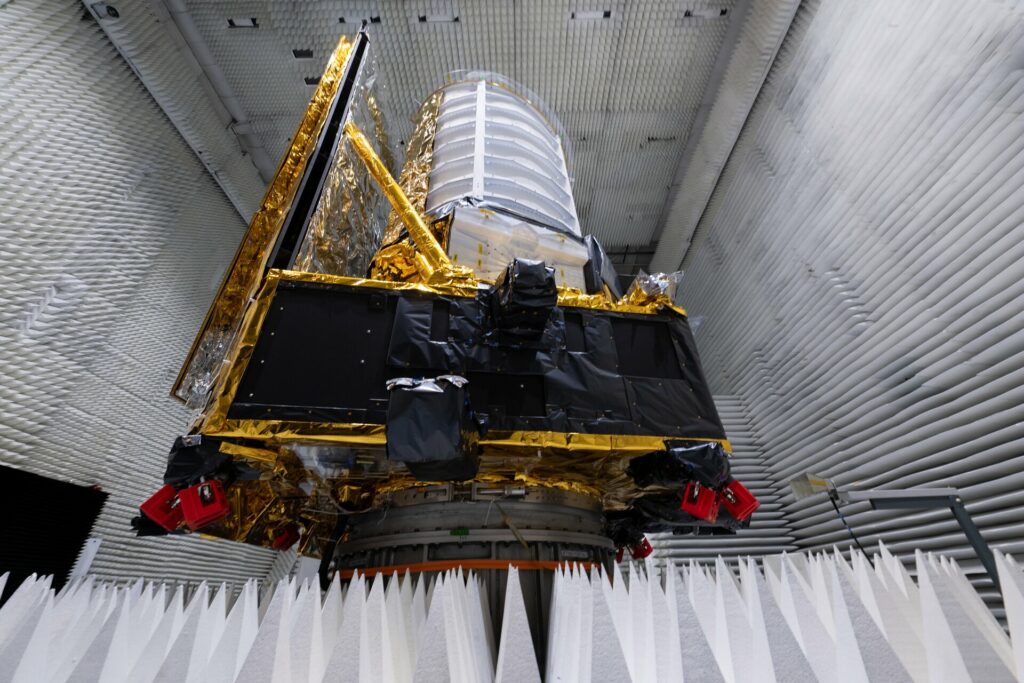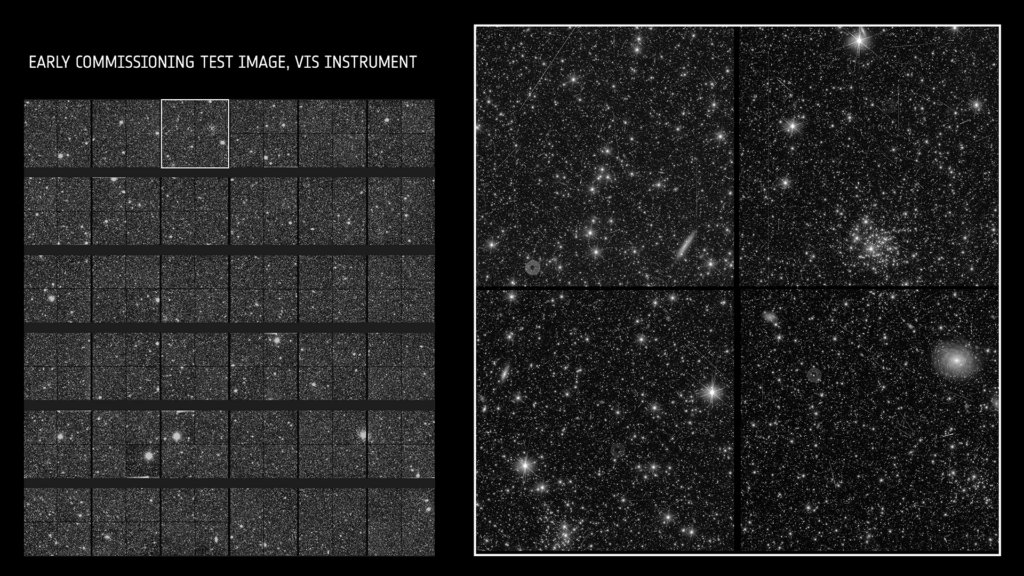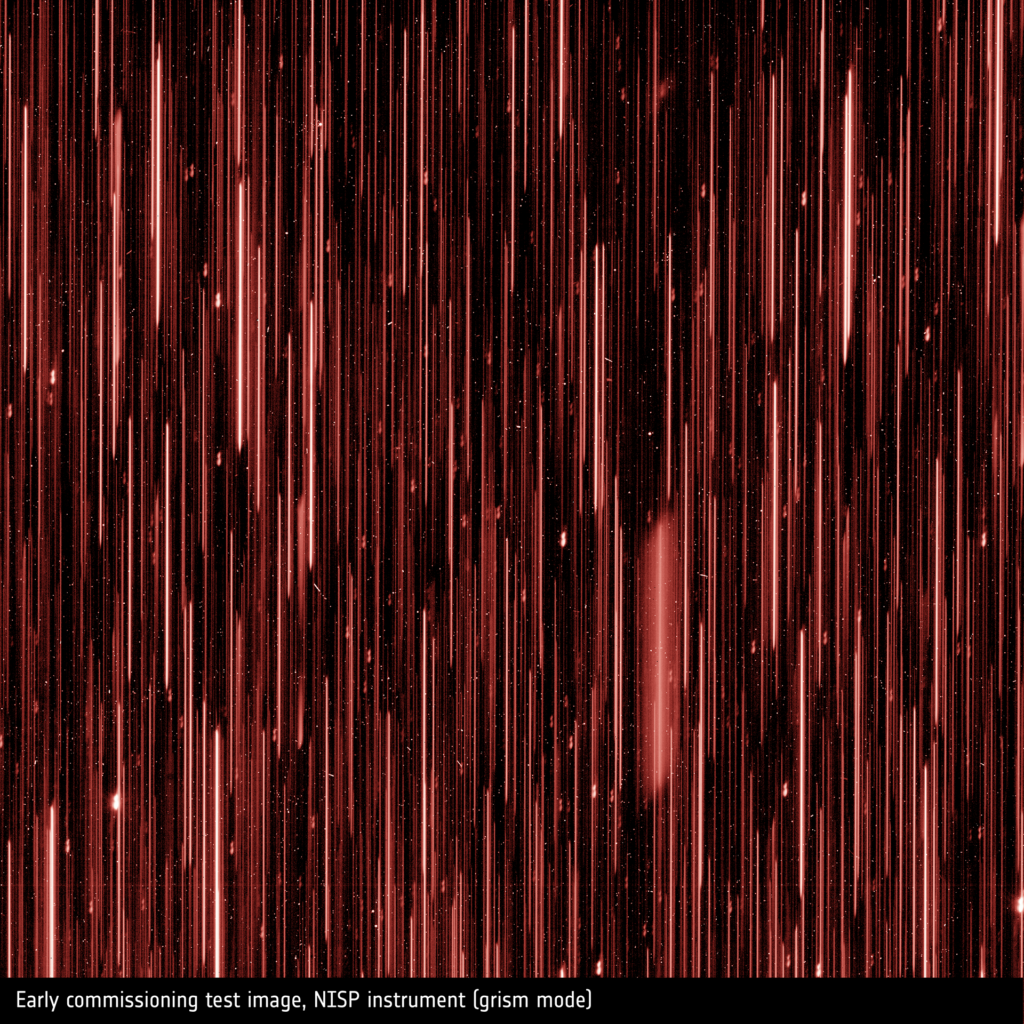ESA has published the first test images obtained by the recently launched Euclid telescope. The pictures demonstrate its technical capabilities.
Explorer of the Dark Universe
The Euclid telescope was created by ESA as part of the Cosmic Vision scientific program. Its main task is to study the mysterious dark matter and dark energy — invisible forces that, according to scientists, make up 95% of the known Universe.

To reveal the influence of dark matter and dark energy on ordinary matter, Euclid will carry out high-precision measurements of the redshifts of distant galaxies located within a radius of up to 10 billion light-years from the Milky Way. This telescope will be assisted by a 1.2-meter mirror installed on board, as well as two scientific instruments: a visible radiation visualizer (VIS), and a near-infrared spectrometer and photometer (NISP).
First images of the Euclid telescope
Euclid was launched on July 1. By the end of the month, it reached its destination — the L2 Lagrange point located at a distance of 1.5 million km from the Earth. It is a popular working position for space observatories. In particular, it is in the vicinity of point L2 that the famous James Webb Telescope is located.

After Euclid reached its working position, the mission specialists activated its instruments and took a number of test pictures. Since the images were taken with virtually no camera calibration and were not subjected to post-processing, they contain some artifacts. Nevertheless, according to the engineers, even these early images confidently demonstrate the promising capabilities of the observatory.

In the next few months, engineers will be engaged in calibration of Euclid cameras. Upon its completion, the telescope will begin its main scientific program. It is designed for six years with the possibility of further extension.
Follow us on Twitter to get the most interesting space news in time
https://twitter.com/ust_magazine
